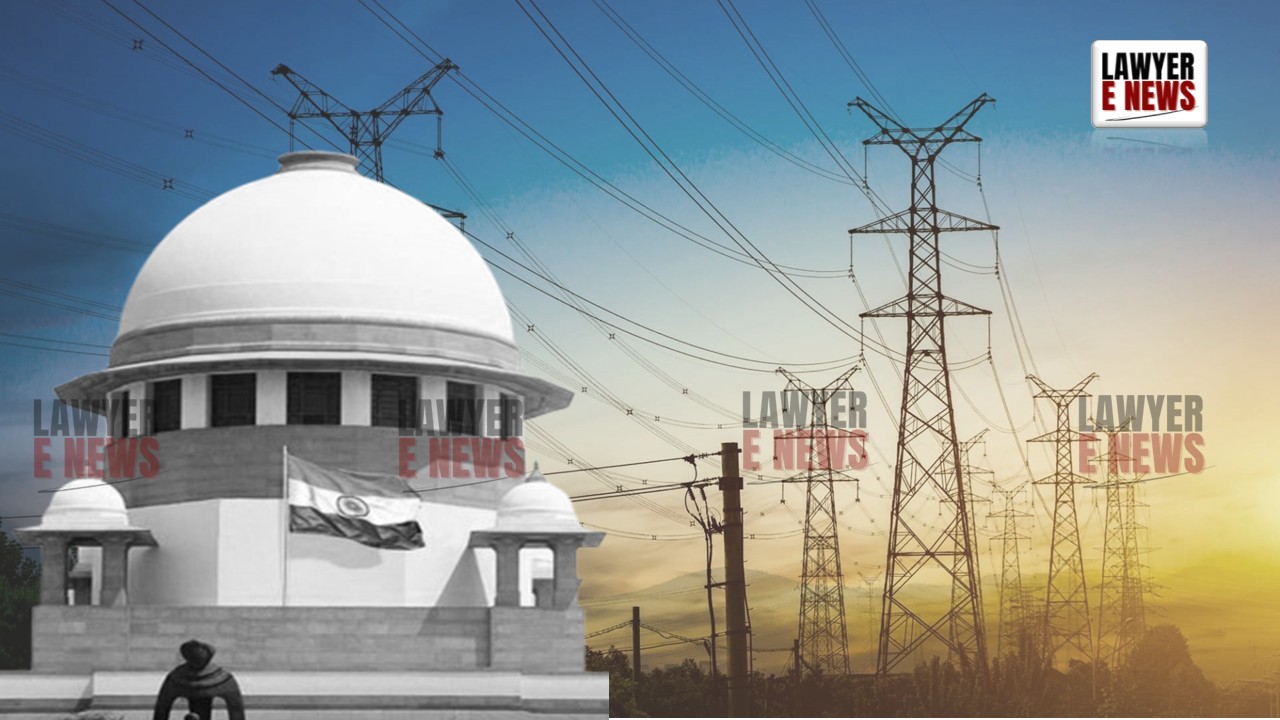-
by Admin
20 December 2025 9:36 AM



“Only Additional Works Necessary for Efficient Operation Can Qualify for Capitalisation; Not Routine Equipment Replacement,” - Supreme Court of India In firmly ruling that the replacement of burnt or damaged Inter-Connecting Transformers (ICTs) does not qualify for additional capitalisation under Regulation 53 of the CERC (Terms and Conditions of Tariff) Regulations, 2004. The Court held that such replacement falls within the obligation of maintenance and cannot be considered a fresh capital investment warranting an increase in tariff.
The ruling delineates the scope of tariff capitalisation for transmission licensees and underscores the need for clear demarcation between maintenance duties and new investments.
The case arose from the breakdown of three ICTs in the Rihand I transmission system operated by Powergrid Corporation in April-May 2006. The transformers at Ballabgarh and Mandola substations were burnt and rendered non-operational due to internal faults. As an emergency response during peak summer, Powergrid diverted transformers from Kaithal, Mainpuri, and Bahadurgarh substations to restore transmission.
Powergrid subsequently filed two petitions before the Central Electricity Regulatory Commission (CERC), seeking:
1. Approval for de-capitalisation of the damaged ICTs and additional capitalisation of the replacement units;
2. Tariff revision based on this new capitalisation;
3. Revised availability certificate to ensure full recovery of transmission charges.
CERC dismissed both petitions, holding that the expenditure incurred was part of regular maintenance and not capital investment. The Appellate Tribunal for Electricity upheld the decision, prompting Powergrid’s appeal to the Supreme Court.
The Supreme Court framed three legal questions:
1. Whether the replacement of the damaged ICTs qualified for additional capitalisation under the CERC Tariff Regulations?
2. Whether Powergrid’s self-insurance policy covered the cost of the replacement?
3. Whether the Member-Secretary of the Northern Regional Power Committee should have issued a revised availability certificate?
On the primary issue of additional capitalisation, the Court interpreted Regulation 53 of the CERC Tariff Regulations and observed: “All that the appellant had done was diversion and replacement of ICTs. This cannot be construed as doing any additional work/services.”
The Court rejected Powergrid’s reliance on Regulation 53(2)(iv), which allows additional capitalisation for "any additional works/services which have become necessary for efficient and successful operation of the project", stating that: “Replacement of damaged equipment(s) is part of operation and maintenance.”
It further clarified that the replacement of transformers due to damage or breakdown is a routine incident of operation and falls within the maintenance duties of a transmission licensee.
“As a central transmission utility, it was the duty of the appellant to maintain a healthy transmission system.”
With respect to Note 2 to Regulation 53, which permits capitalisation of replacement after writing off old assets, the Court noted: “Both Rihand I and Rihand II cannot be considered as old assets… there is nothing on record to show that prior to the breakdown of ICTs, the transmission systems were in bad shape or had started wearing out.”
Thus, the Supreme Court upheld the view that no additional capitalisation was admissible and the expenditure was to be treated as part of operation and maintenance expenses, for which no tariff revision can be granted.
Self-Insurance Policy Covers Loss from Fire, Not Tariff Capitalisation
The Court also examined Powergrid’s self-insurance reserve, created in 1994–95 to cover risks such as fire and machinery breakdown. Powergrid had argued that the cause of the ICT failure was internal machinery fault, not fire, and hence was not covered by the reserve. The Court called this contention “contradictory” and concluded: “The loss was caused due to fire because of which the ICTs became damaged beyond immediate repair.”
Relying on the precedent of New India Assurance Co. Ltd. v. Zuari Industries Ltd., (2009) 9 SCC 70, the Court applied the principle of proximate cause, stating: “Had the fire not occurred, the damage also would not have occurred. There was no intervening agency which was an independent source of the damage.”
The Court thus held: “The self-insurance policy of the appellant covered the cost of replacement of the damaged ICTs. Therefore, Appellate Tribunal was justified in directing the appellant to finance the net cost from the self-insurance fund reserve as part of the operation and maintenance charges.”
No Entitlement to Revised Availability Certificate
Having denied the claim for capitalisation, the Court held that Powergrid’s request for a revised availability certificate also had no merit, stating: “Since decapitalization and additional capitalization... have not been allowed, question of issuing direction to the Member-Secretary, NRPC... does not arise.”
The Supreme Court has unequivocally held that replacement of damaged assets is not capital expenditure but part of routine maintenance obligations of a transmission utility. It ruled that the CERC Tariff Regulations do not permit tariff escalation for such replacements, and the insurance reserve, funded by contributions from beneficiaries, must absorb such losses.
The Court concluded: “We, therefore, do not find any ground to interfere with the impugned order… the appeals are devoid of any merit.”
Date of Decision: May 5, 2025
